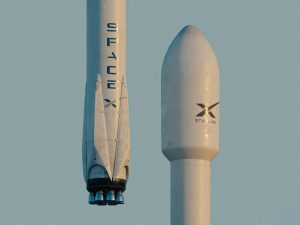The Future of Satellites: Revolutionizing Global Connectivity with WordPress

The Future of Satellites: Revolutionizing Global Connectivity with WordPress
The future of satellites is an exciting and rapidly evolving field, with new technologies and innovations emerging all the time. As we look to the future, it’s clear that satellites will play an increasingly important role in shaping our world and enabling global connectivity. In this article, we’ll explore the latest developments in satellite technology and how they’re set to impact our lives.
One of the most significant trends in the future of satellites is the rise of smallsat constellations. These are networks of hundreds or even thousands of small satellites that work together to provide global coverage and enable a wide range of applications, from communication and navigation to Earth observation and remote sensing. Small satellites are much cheaper and faster to launch than traditional satellites, making them an attractive option for businesses and organizations looking to get involved in the satellite industry.
The Role of WordPress in the Future of Satellites
WordPress is playing an increasingly important role in the future of satellites, enabling businesses and individuals to build and manage their own satellite-related websites and applications. With its ease of use, flexibility, and scalability, WordPress is the perfect platform for anyone looking to get involved in the satellite industry. From satellite manufacturers and launch providers to satellite operators and service providers, WordPress is being used to build and manage a wide range of satellite-related websites and applications.
For example, satellite manufacturers are using WordPress to build websites that showcase their products and services, provide customer support, and enable online sales and marketing. Satellite launch providers are using WordPress to build websites that provide information on launch schedules, pricing, and services, as well as enable online booking and payment. Satellite operators are using WordPress to build websites that provide information on their services, enable customer support, and offer online account management.
Advances in Satellite Technology
There are many exciting advances in satellite technology that are set to shape the future of the industry. One of the most significant is the development of new propulsion systems, such as electric propulsion and advanced ion engines. These systems enable satellites to travel farther and faster, while also reducing fuel consumption and increasing mission duration. Another significant advance is the development of new materials and manufacturing techniques, such as 3D printing and advanced composites. These enable the creation of lighter, stronger, and more efficient satellite components, which can be used to build smaller, more capable satellites.
Other advances in satellite technology include the development of new sensor systems, such as hyperspectral and synthetic aperture radar (SAR) instruments. These enable satellites to collect more detailed and accurate data on the Earth’s surface, which can be used for a wide range of applications, from environmental monitoring and natural resource management to disaster response and recovery. The development of new communication systems, such as high-throughput satellites (HTS) and very small aperture terminals (VSATs), is also enabling faster and more reliable communication services, which can be used to support a wide range of applications, from broadband internet access to mobile connectivity.
Challenges and Opportunities in the Future of Satellites
Despite the many exciting advances in satellite technology, there are also many challenges and opportunities that need to be addressed. One of the biggest challenges is the growing problem of space debris, which poses a significant threat to the safety and sustainability of satellite operations. Another challenge is the need for more efficient and effective launch systems, which can reduce the cost and environmental impact of accessing space.
There are also many opportunities in the future of satellites, from the development of new applications and services to the creation of new businesses and industries. For example, the rise of smallsat constellations is enabling the creation of new satellite-based services, such as global connectivity and Earth observation. The development of new technologies, such as satellite-based quantum computing and artificial intelligence, is also enabling the creation of new applications and services that can be used to support a wide range of industries and applications.




